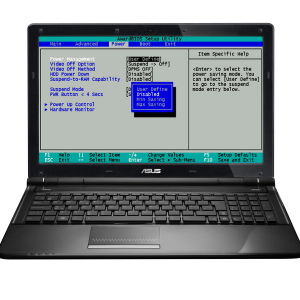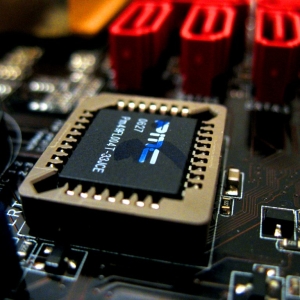BIOS, like other software components, needs timely update. Old versions of the BIOS software shell can begin to conflict with the system, to brake her work. Usually, the manufacturer's website manufacturer shows accurate instructions and recommendations for updating the BIOS. For inexperienced users, this process may be quite complicated, so it is better to refer to this article.
Update bios or not
This is not an unambiguous question to which you can answer clearly. The thing is that old motherboards may not support the newest versions of the shell. By updating the BIOS on the old motherboard you only reduce its performance. You can highlight the main items when the update is advisable:
- Developer recommendations. If the official website of the manufacturer's motherboard is indicated that it is best to update your BIOS every time, then it is not worth doing this;
- When updating computer components. For example, if you wanted to put a new processor or a video card with a generation above. For stable work, a new BIOS is needed.
Of course, you will be able to roll back the changes back, if you consider it necessary, however, it will take a lot of time and will require certain knowledge from you.

How to find out which motherboard is worth you
The decisive factor when choosing an update is your motherboard. You need to know the developer, version number, as well as the revision number. Please note that the revision number is the actual number of the motherboard. For example, there are several identical motherboards with the same name and version, however, the revision number is different. This means that some of them were released earlier, while others later. This directly affects the ability to update bios.
As a rule, third-party utilities and programs do not show the revision number. You can do this by unscrewing the wall of the system unit and independently finding rooms on the board. It may be difficult, only if you have a laptop. Then you have to trust the program recognition programs of motherboards.

BIOS update in Windows
You can choose the update method for yourself: in Windows or through DOS Wednesday. The first option is much easier and faster, since it does not require the reboot of the computer and the direct entry into the BIOS environment.
To begin with, find the official website of your motherboard manufacturer. For example, you can take the company's website Dell.. Going to him, find the model of the laptop or motherboard, which are yours.

Before searching for the driver, refer to the "Operating System" line.

In the unfolded list, select BIOS.

Now you will see all the updates from the BIOS that can be downloaded to your laptop or computer.

Download the update to your computer and run the saved file.

Some developers have a fully automated process and does not require your participation, in some cases, you will have to perform a small utility setting.
Click "SETUP" when you are ready to install.
After a few moments, the computer will reboot himself. Do not interfere in the process until it end completely.

BIOS update in DOS environment
This method is relatively obsolete, but there is a place when the update is not installed in the usual way in Windows.
Download the update file on the developer's official website. If possible, choose the firmware for updating via DOS or shell.
After that, the file must be written to the boot disk. It's just enough just in the program Daemon Tools Lite..

The boot disk is created by a maximum of ten minutes, after which you need to get it out of the computer, turn off the system. When turned on, log in to BIOS. This is done by pressing a special button, most often F12 or F7. Now insert the disk and set the load priority not from the hard disk, but with optical.
The firmware will begin by himself. After that, do not forget to change the priority of downloading in the boot back into place.































